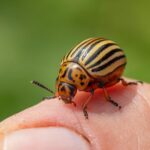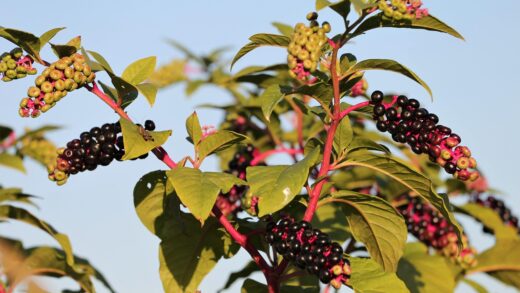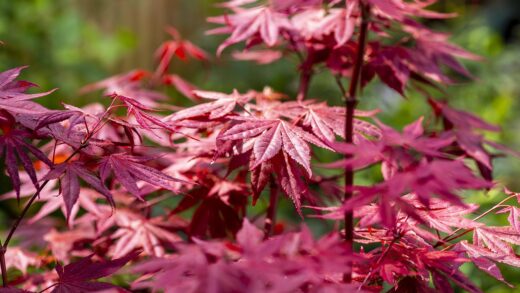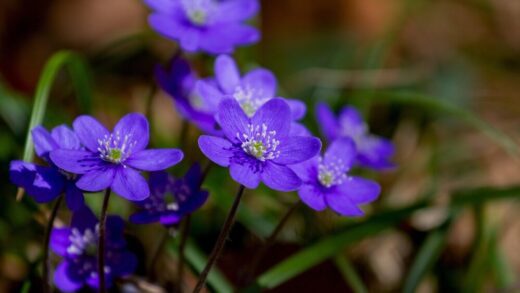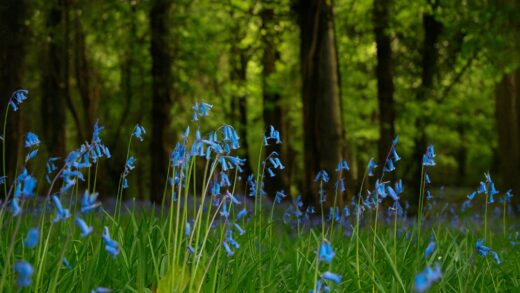The single most important environmental factor influencing the health, vigor, and flowering performance of Caryopteris is an abundance of direct sunlight. This shrub is a true heliophile, or sun-lover, and it absolutely requires a location that receives full sun to thrive. In horticultural terms, full sun is defined as a minimum of six to eight hours of direct, unfiltered sunlight per day during the growing season. Providing this essential requirement is the cornerstone of successful bluebeard cultivation, directly impacting the plant’s habit, bloom production, and overall resilience. Without sufficient light, the plant’s ornamental qualities will be severely compromised.
When planted in a location that provides ample sun, Caryopteris develops into a dense, compact, and well-branched shrub. This sturdy structure is better able to support the profusion of flowers it produces in late summer and autumn. The intense sunlight fuels the process of photosynthesis, providing the energy the plant needs to create the carbohydrates necessary for robust growth and, crucially, for the development of a high number of flower buds. The result is a spectacular floral display, with the vibrant blue flowers covering the plant and attracting a multitude of pollinators.
The quality of the flowers is also directly linked to the intensity of the light. In full sun, the flower color will be at its most vibrant and saturated. The foliage color, which in many cultivars has a silvery or grayish-green hue, will also be more pronounced. This combination of intense blue flowers and attractive foliage makes for a striking presence in the garden border. Furthermore, a plant that is photosynthesizing efficiently is a healthier plant overall, with a stronger immune system and a greater ability to withstand stress from drought, pests, or diseases.
It is important to observe the potential planting site throughout the day to accurately assess how much sun it receives. Obstructions such as houses, trees, or other large shrubs can cast shadows that may not be apparent with just a quick glance. A south-facing or west-facing aspect is typically ideal for providing the long hours of direct sun that Caryopteris craves. Meeting this fundamental light requirement is the first and most critical step towards growing a beautiful and floriferous bluebeard shrub.
The effects of insufficient light
Planting Caryopteris in a location with insufficient light is the most common reason for disappointing performance. When deprived of the full sun it needs, the plant will exhibit several clear signs of stress and poor health. The most noticeable effect will be on its growth habit. Instead of a compact, bushy shrub, it will become leggy and etiolated. Etiolation is a process where plants stretch their stems in an attempt to reach for a light source. This results in weak, spindly stems with large gaps between the leaves, creating a sparse and unattractive appearance.
More articles on this topic
Flowering will also be dramatically reduced in shady conditions. The plant simply does not have enough energy to produce a large number of flower buds when its photosynthetic capacity is limited. The few flowers that are produced will likely be smaller, and their color will be a pale, washed-out version of the vibrant blue seen on sun-grown specimens. In very shady locations, the plant may not flower at all, completely defeating the primary purpose for which it is grown in the garden.
Beyond the aesthetic consequences, a lack of sunlight also impacts the plant’s health. The weak, soft growth produced in shady conditions is more susceptible to attack by pests and is more likely to be damaged by wind or heavy rain. Furthermore, shady locations often have reduced air circulation and take longer to dry out after rainfall. This lingering moisture on the foliage creates an ideal environment for the development of fungal diseases, such as leaf spot or powdery mildew, which are rarely an issue for Caryopteris grown in the open sun.
In short, while a Caryopteris might survive for a time in a partially shaded spot, it will never thrive. It will be a shadow of its potential self, lacking the dense form and profuse blooms that make it such a desirable garden plant. If a garden is predominantly shady, it is far better to choose a different, shade-tolerant shrub that is suited to those conditions rather than trying to force a sun-loving plant like bluebeard to grow where it will not be happy.
Finding the perfect sunny spot
Selecting the ideal location for a Caryopteris involves more than just identifying a patch of ground that gets sun. A careful evaluation of the garden’s microclimates and light patterns is necessary. The best locations are typically those with an open, southern or western exposure, where the plant will be bathed in sunlight for the majority of the day, particularly during the intense afternoon hours. These spots will provide the energy needed for maximum flower production.
More articles on this topic
Consider the path of the sun throughout the seasons. A spot that is sunny in the spring might become shaded in the summer as the leaves of nearby deciduous trees emerge. The optimal location for Caryopteris will have full sun from late spring through early autumn, which is its active growing and flowering period. Planting it at the front of a border, away from the shadow of taller perennials or shrubs, is often a good strategy. It also excels when planted on sunny slopes or in rock gardens where it receives reflected heat and light.
In addition to the quantity of light, the quality of the environment is also a factor. Good air circulation is a valuable asset. A location where breezes can move freely through the plant’s foliage helps to keep it dry and reduces the risk of fungal diseases. Avoid planting it in crowded conditions where it is tightly packed against other plants. Giving it adequate space ensures that all parts of the shrub receive sunlight and air, promoting even growth and a healthy structure.
It is also worth noting that in extremely hot, arid climates (such as desert regions), a location with full morning sun and a little light shade during the most scorching part of the late afternoon might be tolerated or even beneficial. However, for the vast majority of temperate climates, the rule of “the more sun, the better” holds true. This shrub has evolved to flourish in open, sunny habitats, and replicating this in the garden is the key to a stunning and long-lasting display.
Light’s role in plant health
Sunlight is the fundamental energy source for nearly all plant life, and its role extends far beyond simply enabling flowering. For Caryopteris, adequate light exposure is intrinsically linked to its overall physiological health. The process of photosynthesis, which occurs in the leaves, uses light energy to convert carbon dioxide and water into sugars. These sugars are the plant’s food, providing the fuel for every metabolic process, from root growth to the production of the aromatic oils that deter pests.
A plant growing in full sun is able to produce an abundance of energy. This energy surplus allows it to build strong, sturdy cell walls, resulting in robust stems that can support the weight of its flowers. It also enables the plant to develop a deep and extensive root system, which is crucial for water and nutrient uptake and is the basis of its drought tolerance. A well-fed plant is also better equipped to defend itself against pests and diseases, producing the chemical compounds that make it unpalatable or resistant to attack.
Furthermore, direct sunlight acts as a natural sanitizer for the plant’s foliage. The ultraviolet rays and the drying effect of the sun help to inhibit the germination and spread of fungal spores on the leaf surfaces. This is why fungal diseases are so much more prevalent in damp, shady conditions. By placing Caryopteris in a sunny, open location, the gardener is creating an environment that is naturally hostile to the pathogens that could harm it.
In essence, providing full sun is not just about getting more flowers; it is about fulfilling the plant’s most basic biological needs. It is the foundation upon which the plant’s health is built. When this primary requirement is met, other aspects of care, such as watering and feeding, become much simpler. A sun-drenched Caryopteris is a happy Caryopteris, able to grow to its full potential and perform as the beautiful, low-maintenance shrub it is meant to be.
📷Agnieszka Kwiecień, Nova, CC BY-SA 4.0, via Wikimedia Commons










